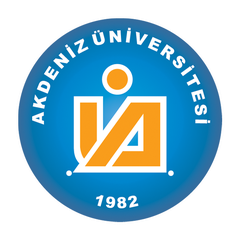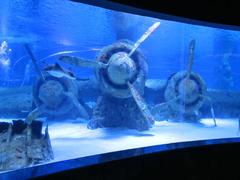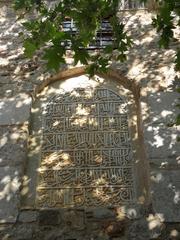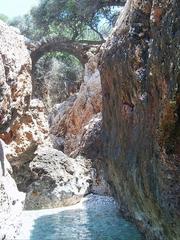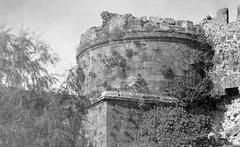Visiting Corydala: Antalya Historical Site Guide – Tickets, Hours, and Attractions
Date: 14/06/2025
Introduction: Explore the Ancient City of Corydala
Tucked into the tranquil foothills of the Taurus Mountains near Antalya, Turkey, Corydala is a hidden gem among ancient Lycian cities. Overlooked by many mainstream tourists, Corydala offers a rare blend of historical intrigue, untouched ruins, and sweeping Anatolian landscapes. This comprehensive guide covers the site’s layered history, practical visiting information, nearby attractions, and essential tips to ensure an enriching experience at one of the region’s most authentic archaeological destinations. (Ancient Lycia - Wikipedia; Turkey Homes - Historical Places in Antalya; Antalya Tourist Information - History)
Table of Contents
- Introduction
- Early Settlement and Geographic Context
- Political History and the Lycian League
- Hellenistic, Roman, and Byzantine Eras
- Religious and Cultural Highlights
- Decline and Abandonment
- Archaeological Remains
- Visiting Corydala: Practical Information
- Travel Tips
- Frequently Asked Questions (FAQ)
- Corydala’s Place in Lycian Civilization
- Conclusion
- References
Early Settlement and Geographic Context
Corydala is located near the present-day village of Hacıveliler in the Kumluca district, about 90 kilometers southwest of Antalya city. Its position in the Taurus Mountains’ foothills provided natural defense and fertile land, while ancient trade routes connected it to both the Mediterranean coast and Anatolia’s interior. Archaeological evidence dates Corydala’s origins at least to the Classical period, with indications of earlier Bronze Age habitation, consistent with the settlement patterns of Lycia’s ancient cities. (Ancient Lycia - Wikipedia; List of archaeological periods - Wikipedia)
Political History and the Lycian League
Corydala was an active participant in the Lycian League, a unique federation of city-states renowned for early democratic governance. Although not among the League’s largest cities, Corydala’s political and economic integration is evidenced by ancient texts and local coinage. After Lycia became a Roman province in 43 CE, the League—and Corydala with it—retained a measure of local autonomy under Roman administration. (Ancient Lycia - Wikipedia; Britannica - Lycia)
Hellenistic, Roman, and Byzantine Eras
Hellenistic Period
Following Alexander the Great’s campaigns, Corydala underwent a period of Hellenization. Greek became the primary language, and public architecture, such as the acropolis and agora, began to reflect Hellenistic influences. The city was fortified with new defensive walls and expanded its public spaces. (Ancient Lycia - Wikipedia)
Roman Period
Under Roman rule, Corydala prospered further. New infrastructure—baths, aqueducts, and paved streets—was added, and public buildings were renovated in the Roman style, often funded by local elites. Roman roads linked Corydala to other Lycian sites, enhancing its role as a regional waypoint. (Turkey Homes - Historical Places in Antalya)
Byzantine Period
Corydala became a bishopric in the early Christian era. Remnants of basilicas and inscriptions reveal the city’s prominence during the Byzantine period, signifying the spread of Christianity and the continued vitality of the site into Late Antiquity. (Britannica - Lycia)
Religious and Cultural Highlights
Corydala’s religious landscape was marked by a blend of Lycian, Greek, and Roman deities, with temples dedicated to Zeus, Artemis, and Apollo. The city’s necropolis, featuring rock-cut tombs and monumental sarcophagi, exemplifies the unique Lycian approach to funerary architecture. During the Byzantine era, early Christian churches transformed the local religious fabric. (Ancient Origins - Lycian Tombs)
Decline and Abandonment
From the 7th century CE, Corydala’s fortunes waned due to shifting trade patterns, natural disasters (notably earthquakes), and Arab raids that destabilized the region. By the late Byzantine period, most inhabitants had relocated, leaving Corydala largely abandoned. (Turkey Homes - Historical Places in Antalya)
Archaeological Remains
Visitors to Corydala today can explore:
- Acropolis: The fortified hilltop with remnants of defensive walls and public buildings.
- Necropolis: Lycian-style rock-cut tombs, some with Greek and Lycian inscriptions.
- Public Structures: Foundations of an agora, theater, and possible temples.
- Inscriptions and Coins: Numerous artifacts attest to Corydala’s political, civic, and religious life. (Ancient Lycia - Wikipedia)
Though the site is less excavated than others in Lycia, its untouched character offers a sense of discovery and solitude.
Visiting Corydala: Practical Information
Visiting Hours and Tickets
- Hours: Corydala is generally open daily from 8:00 AM to 6:00 PM (April–October), and until 4:00 PM during the off-season. Visit during daylight for safety and optimal conditions.
- Tickets: Entry is free. Donations for preservation are appreciated. Guided tours, when available, may have associated fees. (iantalya.com)
Transportation and Access
- By Car: Easiest option. Drive from Antalya via the D400 highway to Kumluca, then follow signs towards Hacıveliler. The last stretch may include narrow rural roads.
- By Public Transport: Limited. Buses to Kumluca are available, but the final segment often requires a taxi or dolmuş. Check schedules in advance.
- Guided Tours: Some local agencies offer specialized tours to Corydala. Booking in advance is recommended. (helloguide.org)
Accessibility
The terrain is rocky and uneven, with moderate inclines and no paved paths. The site is not wheelchair accessible. Sturdy shoes are essential.
Nearby Attractions
Combine Corydala with visits to other Lycian sites such as Rhodiapolis, Olympos, and Phaselis, or relax at nearby beaches like Adrasan and Çıralı. travsl.com
Guided Tours and Photography
Guided tours provide historical context and navigation assistance. Photography is allowed; sunrise and sunset offer dramatic lighting for photos. Drones may require special permits.
Travel Tips
- Best Time to Visit: Spring (April–May) and autumn (September–October) offer pleasant weather and lush scenery. Avoid midday heat in summer.
- What to Bring: Water, snacks, sun protection (hat, sunscreen, sunglasses), sturdy footwear, and offline maps or GPS.
- Facilities: No restrooms, cafes, or visitor centers at the site. Nearest amenities are in Hacıveliler or Kumluca.
- Local Etiquette: Dress modestly when passing through villages. Basic Turkish greetings are appreciated. (travelvagabonds.com)
Frequently Asked Questions (FAQ)
Q: What are Corydala’s visiting hours?
A: Generally open from 8:00 AM to 6:00 PM in high season, and until 4:00 PM in the off-season.
Q: Is there an entrance fee?
A: No, entry is free. Donations are appreciated.
Q: Is Corydala accessible for people with disabilities?
A: The site is not wheelchair accessible due to rugged terrain.
Q: Are guided tours available?
A: Yes, but availability varies. Book through local agencies.
Q: Are facilities like restrooms or cafes available?
A: No, plan ahead and use facilities in nearby villages.
Corydala’s Place in Lycian Civilization
Corydala embodies the fusion of Anatolian, Hellenistic, Roman, and Byzantine cultures that defined the Lycian region. Its role in the Lycian League and its distinctive rock-cut tombs and inscriptions provide valuable insights into ancient urban life. As a quieter alternative to more developed sites, Corydala invites visitors to connect with Turkey’s ancient heritage in peaceful, scenic surroundings. (Ancient Lycia - Wikipedia; Ancient Origins - Lycian Tombs; Antalya Tourist Information - History)
Conclusion
Corydala stands as a testament to the enduring legacy of Lycia and its ancient cities. Free to visit and set amidst breathtaking mountain scenery, it is an ideal destination for those seeking authentic historical exploration away from the crowds. Plan your trip with the practical info above, respect the site’s natural and cultural heritage, and enjoy an immersive journey into Turkey’s ancient past.
For interactive maps, guided tours, and up-to-date visitor information, download the Audiala app and consult official Antalya tourism resources.
References
- Ancient Lycia - Wikipedia
- List of archaeological periods - Wikipedia
- Britannica - Lycia
- Turkey Homes - Historical Places in Antalya
- Ancient Origins - Lycian Tombs
- Antalya Tourist Information - History
- Antalya Home Guide
- Antalya Sound Journey
- Visit Turkey
- Antalya Tourist Information
- Everyday Turkey Tours
- iantalya.com
- helloguide.org
- travelvagabonds.com
- magnificenttravel.com
- travsl.com
